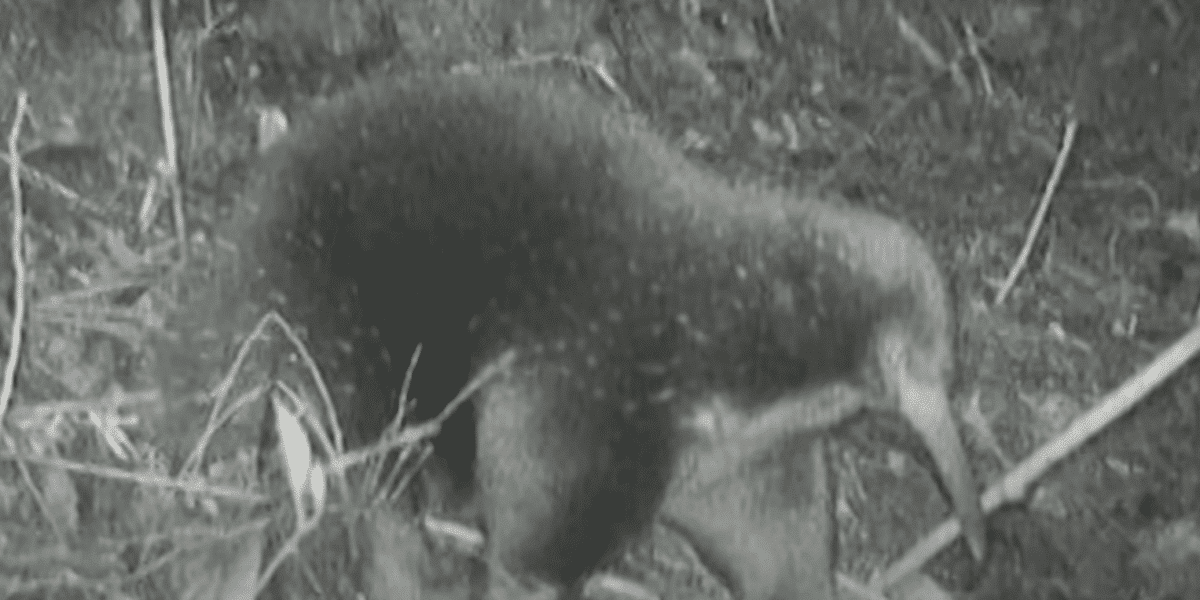In the heart of Indonesia’s treacherous Cyclops Mountains, a remarkable expedition led by the intrepid researchers of Expedition Cyclops has shattered the decades-long silence surrounding the elusive Attenborough’s long-beaked echidna. The discovery, backed by concrete photographic evidence, marks a triumphant moment in the annals of biodiversity exploration, showcasing the resilience of a species thought lost to time.

A Perilous Pursuit through Cyclops Mountains
Embarking on a daring nine-week quest, a courageous 25-person crew, led by the indomitable James Kempton of Oxford, braved the perils of malaria, earthquakes, and even eye-embedding leeches. The Cyclops Mountains, with their unpredictable terrain resembling a ladder of rotting wood and spiked rails, served as the backdrop for this epic adventure.
Attenborough’s Long-Beaked Echidna: A Cryptic Survivor
The long-beaked echidna, a quill-covered marvel with powerful digging feet, had remained hidden for over 60 years, a victim of illegal hunting in its less than 90-square-mile habitat. Designated as critically endangered on the International Union for the Conservation of Nature’s Red List, the echidna’s survival hung in the balance, tied to the conservation efforts of the brave Expedition Cyclops.
The Hunt for the Cryptic Creature
Deploying over 30 strategically placed camera traps, the researchers diligently scoured the Cyclops Mountains. Their suspicion, fueled by the telltale holes in the ground indicative of the echidna’s foraging activities, proved correct. In the final moments of the expedition, on the last SD card, the elusive creature was captured in all its glory. The euphoria that followed attested to the significance of this momentous rediscovery.
Conservation Challenges and Indigenous Collaboration
Despite this victory, Kempton emphasizes that the echidna’s critically endangered status remains a pressing concern, unshielded by Indonesian law. The inclusion of over six local partners, including Indigenous groups, students, and governmental organizations, underscores Expedition Cyclops’ commitment to broader conservation initiatives. A united effort is crucial to protect not only the echidna but also the unique ecosystem of the Cyclops Mountains.
Guardians of Evolution: The Echidna’s Role in Earth’s History
Beyond its charismatic appearance, Attenborough’s long-beaked echidna serves as one of the five guardians of an extraordinary evolutionary history dating back over 200 million years. As a monotreme, a rare group of mammals that lay eggs, the echidna represents a living relic of an ancient lineage. With only five existing monotreme species, including the platypus, the echidna’s extinction would be an irreversible tragedy for evolutionary biology.
Beyond the Echidna: A Bounty of Discoveries
Expedition Cyclops didn’t limit its accomplishments to the rediscovery of the long-beaked echidna. Venturing into the heart of the Cyclops Mountains, the researchers unveiled a trove of newfound species. From hundreds of insects to at least two frog species and a land-dwelling tree shrimp, the biodiversity of this region stands as a testament to the unique geologic origins of the Cyclops Mountains.
Up next:
Join our Forum for free today!

- The Kleptomaniac Cat That Rules Houston - July 20, 2024
- Elephant Makes a Lifelong Friend at Sanctuary in Tennessee - July 14, 2024
- Evidence For World’s Oldest Fossilized Forest Discovered in New York - July 11, 2024


